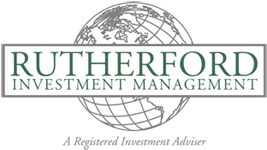Published March 12, 2012

For the year through March 2, the Dow is up 6.8 percent, the S&P is up 9.3 percent and the Nasdaq is up 14.2 percent. The market continues to be “in a confirmed uptrend,” according to Investor’s Business Daily.
The Dow crossed the 13,000 milestone, the ninth time it has done so since 2007. Along the way the index has sunk below and bounced above 12,000, 11,000, 10,000, 9,000, 8,000 and 7,000 more than 300 times. So it is not hard to see why a number contains no magic.
The Dow remains more than 1,000 points below its record high of 14,164.53, set in October 2007. The S&P remains 15 percent below its record close of 1,565.15, set the same month. U.S. gross domestic product grew 3 percent in the fourth quarter of 2011. The GDP is the broadest measure of all goods and services produced in the economy. This was up slightly from estimated growth of 2.8 percent. Economists surveyed by the Dow Jones Newswire had expected 2.7 percent.
The latest report also included positive revision for household income in the last half of 2011, a potentially positive sign of stronger consumer spending to follow. Americans started spending more freely as the unemployment rate began to edge down. Personal expenditure rose 2.1 percent in the fourth quarter, more than anticipated.
Last week’s figures also revised real disposable income growth to 1.4 percent, up from a 1.9 percent drop in the third quarter. The savings rate also was revised up. These all suggest healthier household finances than previously thought.
The growth in the economy has led Federal Reserve officials to debate whether additional stimulus is necessary. They expect the U.S. economy to grow between 2.2 and 2.7 percent in 2012. If prices stay in check, the Fed would have more leeway to pursue further easing. The core inflation rate, which excludes more volatile food and energy costs, increased to 1.3 percent in the fourth quarter – up from the estimated 1.1 percent.
Housing prices continue to decline in much of the nation. Foreclosures accounted for 24 percent of home sales in the fourth quarter of 2011. The housing crisis is clearly not over. Some areas are showing improvement; however, overall in the U.S., prices are declining.
Federal Reserve Chairman Ben Bernanke testified before Congress, saying that a “financial accident” in Europe poses significant risks for the U.S. While the U.S. banks have done a “pretty good job” of insulating themselves from direct exposure to European turmoil, if the euro zone were to slide into a deeper crisis, then the U.S. economy could be imperiled.
The recent Greek settlement contains hidden dangers if the protection of credit default swaps is triggered. Even U.S. financial institutions could find themselves paying on their responsibilities, perhaps even billions of dollars. Indeed, the U.S. Federal Reserve might even have to backstop the European Central Bank.
Bernanke prescribed better firewalls in Europe, and an orderly – not uncontrolled – Greek default, further saying that exiting the euro would be very difficult. Figures from China are hard to obtain, and even harder to interpret, but it appears that China is carrying out its longtime threat to diversify away from U.S dollar assets. The share of U.S. assets in total reserves appears to have fallen to 54 percent of its portfolio, from 66 percent a year earlier; however, total holdings went up because the size of the portfolio grew so much.
These numbers show there is plenty to worry about on the world scene. The Greek drama continues. Fears over a conflagration in the Middle East persist. But the U.S. economy appears to be strengthening, and the market has been in a strong rally since the end of last year. While the market could pause, or even correct, it continues to climb a wall of worry … and is in a confirmed uptrend.
